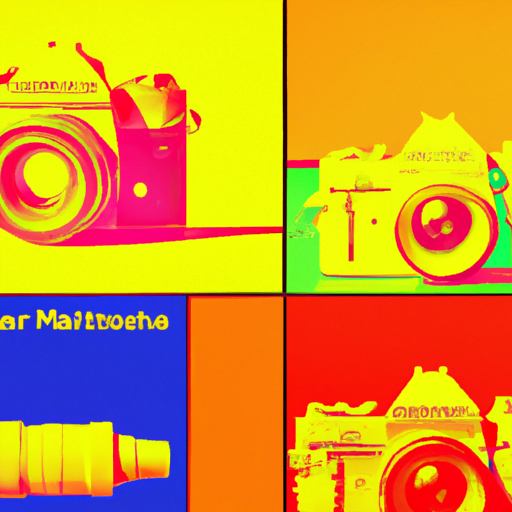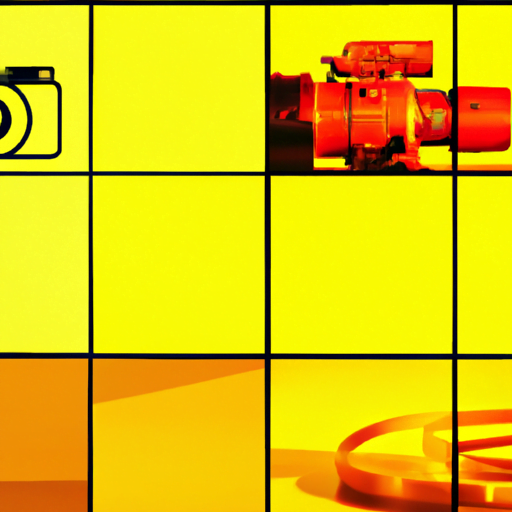
-
Table of Contents
- The Marriage of Photography and Graphic Design
- The Intersection of Photography and Graphic Design
- The Impact of Photography and Graphic Design in Advertising
- Case Studies: Successful Integration of Photography and Graphic Design
- 1. Nike’s “Just Do It” Campaign
- 2. National Geographic Magazine
- 3. Apple’s Product Advertisements
- The Future of Photography and Graphic Design
The Marriage of Photography and Graphic Design

Photography and graphic design are two creative disciplines that have long been intertwined. Both fields rely on visual communication to convey messages, evoke emotions, and tell stories. The marriage of photography and graphic design has resulted in powerful and impactful visuals that have shaped our world in numerous ways. In this article, we will explore the relationship between photography and graphic design, the ways in which they complement each other, and the impact they have on various industries.
The Intersection of Photography and Graphic Design
Photography and graphic design intersect in several ways, with each discipline enhancing and complementing the other. Here are some key areas where these two fields converge:
- Visual storytelling: Both photography and graphic design are powerful tools for storytelling. While photography captures real-life moments and emotions, graphic design adds a layer of creativity and visual communication to enhance the narrative. By combining the two, designers can create compelling visuals that engage and captivate audiences.
- Composition and layout: Composition is a fundamental aspect of both photography and graphic design. Both disciplines require an understanding of balance, symmetry, and visual hierarchy. Photographers often use the rule of thirds, leading lines, and other compositional techniques to create visually appealing images. Graphic designers, on the other hand, use similar principles to arrange elements on a page or screen, ensuring a harmonious and visually pleasing layout.
- Color theory: Color plays a crucial role in both photography and graphic design. Photographers use color to evoke emotions, create contrast, and set the mood of an image. Graphic designers, on the other hand, utilize color theory to create harmonious color palettes, establish brand identities, and guide the viewer’s eye. The understanding of color in both disciplines allows for seamless integration and consistency in visual communication.
- Typography: Typography is another area where photography and graphic design converge. While photographers may not directly work with typography, they often consider how text will interact with their images in editorial or advertising contexts. Graphic designers, on the other hand, use typography to enhance the visual impact of their designs, ensuring that the text complements the overall composition and message.
The Impact of Photography and Graphic Design in Advertising
One industry where the marriage of photography and graphic design is particularly evident is advertising. The combination of compelling visuals and persuasive messaging is essential for creating effective advertisements that capture attention and drive consumer behavior. Here are a few ways in which photography and graphic design impact advertising:
- Brand identity: Photography and graphic design work together to establish and reinforce a brand’s identity. Through carefully crafted visuals, including logos, color schemes, and imagery, advertisers can create a consistent and recognizable brand image. For example, the iconic Apple advertisements often feature minimalist product photography combined with clean and simple graphic design elements, reflecting the brand’s sleek and modern identity.
- Emotional connection: Photography has the power to evoke emotions and create a connection with the audience. By incorporating carefully selected images into advertisements, advertisers can tap into the viewer’s emotions and create a memorable experience. Graphic design then enhances these emotions by using typography, color, and layout to reinforce the message and create a cohesive visual narrative.
- Visual hierarchy: Effective advertising relies on guiding the viewer’s attention to key elements and messages. Both photography and graphic design play a role in establishing visual hierarchy. Photographers use composition techniques to direct the viewer’s gaze, while graphic designers use layout and design principles to emphasize important information. By combining these two disciplines, advertisers can create visually compelling advertisements that effectively communicate their message.
- Product presentation: Photography is crucial in showcasing products in advertisements. High-quality product photography can highlight the features, details, and benefits of a product, making it more appealing to potential customers. Graphic design then comes into play by incorporating the product images into visually appealing layouts that enhance the overall presentation and create a desire for the product.
Case Studies: Successful Integration of Photography and Graphic Design
Several brands and campaigns have successfully integrated photography and graphic design to create impactful visuals. Let’s take a look at a few notable case studies:
1. Nike’s “Just Do It” Campaign
Nike’s “Just Do It” campaign is a prime example of how photography and graphic design can work together to create a powerful message. The campaign features striking black and white photographs of athletes in action, capturing their determination and dedication. The images are then combined with bold typography and the iconic Nike logo, creating a visually compelling and memorable campaign that resonates with athletes and sports enthusiasts.
2. National Geographic Magazine
National Geographic Magazine is renowned for its stunning photography and captivating graphic design. The magazine’s editorial team carefully selects and curates powerful images that tell stories from around the world. These images are then combined with thoughtful typography and layout design to create visually immersive and informative articles. The marriage of photography and graphic design in National Geographic Magazine has made it a visual masterpiece that continues to inspire and educate readers.
3. Apple’s Product Advertisements
Apple’s product advertisements are known for their clean and minimalist aesthetic. The combination of high-quality product photography and simple graphic design elements creates a visually appealing and cohesive brand image. Apple’s advertisements often feature a product prominently placed against a clean background, allowing the photography to speak for itself. The graphic design elements, such as the Apple logo and product name, are strategically placed to enhance the overall composition and reinforce the brand’s identity.
The Future of Photography and Graphic Design
As technology continues to advance, the marriage of photography and graphic design is likely to evolve and expand further. Here are a few trends that may shape the future of these disciplines:
- Augmented reality (AR) and virtual reality (VR): AR and VR technologies have the potential to revolutionize the way we experience photography and graphic design. These immersive technologies can create interactive and engaging visual experiences, allowing users to explore and interact with images and designs in new ways.
- Data-driven design: With the rise of big data and analytics, graphic designers can leverage data to inform their design decisions. By analyzing user behavior and preferences, designers can create personalized and targeted visuals that resonate with specific audiences.
- Motion graphics: The integration of motion graphics into photography and graphic design is becoming increasingly popular. Moving images and animations can add a dynamic element to static visuals, creating more engaging and interactive experiences.
- Minimalism and simplicity: The trend towards minimalism and simplicity in design is likely to continue. Clean and uncluttered visuals can help convey messages more effectively and create a memorable brand image.</
